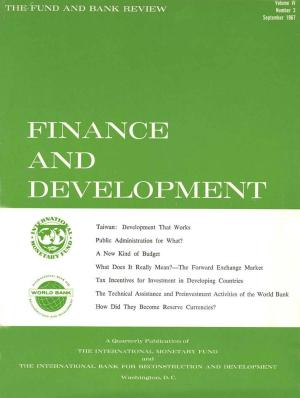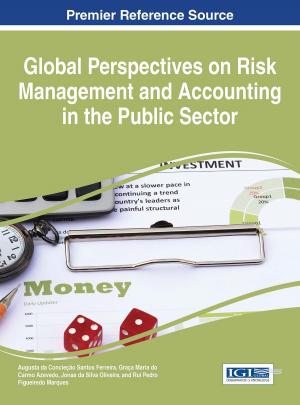How To Read A Rent Roll: A Guide to Understanding Rental Income
Business & Finance, Finance & Investing, Real Estate, Personal Finance, Investing| Author: | John Wilhoit Jr. | ISBN: | 1230000632621 |
| Publisher: | WIN PUBLISHING | Publication: | September 21, 2013 |
| Imprint: | Language: | English |
| Author: | John Wilhoit Jr. |
| ISBN: | 1230000632621 |
| Publisher: | WIN PUBLISHING |
| Publication: | September 21, 2013 |
| Imprint: | |
| Language: | English |
This book is intended for those who are on the verge or in the throes of buying income-producing property. One of your foremost tasks in the acquisitions process is to validate contractual rental revenue.
Rental revenue is provided to prospective investors under the terms of a confidentiality agreement. This agreement prohibits you from sharing the information with anyone unrelated to the transaction. The seller will provide you with certain financial data, including the rent roll, for your inspection during the due diligence period. It is up to you to validate this information.
Buying rental property is not an impulse purchase. The acquisition process is a significant time commitment and one that can be very rewarding. As a prospective buyer, you need to know how to build, understand and use the rent roll to your advantage.
This book is a technical guide to rent roll analysis. The objective here is to narrow your attention to one thing and one thing only; estimating the validity, or reliability, of contractual rental revenue collected from income property. Why is this important? Because getting it wrong undermines any and all further work performed towards the goal of estimating Net
Operating Income (NOI). If the revenue number is suspect, over-reported, under-reported or credit quality is without support, then what's the point of devoting energy, resources or dollars to completing the rest of the equation towards NOI? Without a solid foundation based on valid rental income the balance of your due diligence is an exercise in futility.
The origins of this book began in Omaha, Nebraska, while enjoying a quiet morning in my hotel room. I opened my laptop with the intention of writing a new blog post for Multifamily Insight. The first thing I see is a search term that sent someone to our website: "how to read a rent roll." My post entitled, "How to Read a Rent Roll - Eight Ways to Sunday," is one of the most visited pages on our blog (multifamilyinsight.net.)
This led me to the idea of conducting an informal review of recent literature related to buying income property. What I found was most surprising! In book after book on the subject very little attention was devoted to the importance of rent roll analysis. I asked myself, "How can someone write an entire book on buying income property without providing guidance on a review of the rent roll?"
In book after book--to my astonishment--I found absolutely no references to the subject of rent roll in the indexes. Even more puzzling was that in some books there was no mention of rent roll analysis at all. It seemed incredulous, that in book after book on the subject of how to buy real estate for college real estate classes and the general public there was absolutely no mention of rent roll analysis. I found myself with a worthy challenge that morning and set out to fill the void on this subject.
Throughout this book you are guided towards creating the paper trail in support of findings from rent roll due diligence. How to Read a Rent Roll begins with providing a historic background and purpose for the rent roll, followed by a closer look at its elements. This is followed by a discussion on market analysis, rent and revenue, revenue metrics and rent growth metrics. Next is discovery and methods for documenting revenue, then guidance on high-touch analysis. We also will discuss what to review during a site visit and key factors in determining credit quality.
This book is intended for those who are on the verge or in the throes of buying income-producing property. One of your foremost tasks in the acquisitions process is to validate contractual rental revenue.
Rental revenue is provided to prospective investors under the terms of a confidentiality agreement. This agreement prohibits you from sharing the information with anyone unrelated to the transaction. The seller will provide you with certain financial data, including the rent roll, for your inspection during the due diligence period. It is up to you to validate this information.
Buying rental property is not an impulse purchase. The acquisition process is a significant time commitment and one that can be very rewarding. As a prospective buyer, you need to know how to build, understand and use the rent roll to your advantage.
This book is a technical guide to rent roll analysis. The objective here is to narrow your attention to one thing and one thing only; estimating the validity, or reliability, of contractual rental revenue collected from income property. Why is this important? Because getting it wrong undermines any and all further work performed towards the goal of estimating Net
Operating Income (NOI). If the revenue number is suspect, over-reported, under-reported or credit quality is without support, then what's the point of devoting energy, resources or dollars to completing the rest of the equation towards NOI? Without a solid foundation based on valid rental income the balance of your due diligence is an exercise in futility.
The origins of this book began in Omaha, Nebraska, while enjoying a quiet morning in my hotel room. I opened my laptop with the intention of writing a new blog post for Multifamily Insight. The first thing I see is a search term that sent someone to our website: "how to read a rent roll." My post entitled, "How to Read a Rent Roll - Eight Ways to Sunday," is one of the most visited pages on our blog (multifamilyinsight.net.)
This led me to the idea of conducting an informal review of recent literature related to buying income property. What I found was most surprising! In book after book on the subject very little attention was devoted to the importance of rent roll analysis. I asked myself, "How can someone write an entire book on buying income property without providing guidance on a review of the rent roll?"
In book after book--to my astonishment--I found absolutely no references to the subject of rent roll in the indexes. Even more puzzling was that in some books there was no mention of rent roll analysis at all. It seemed incredulous, that in book after book on the subject of how to buy real estate for college real estate classes and the general public there was absolutely no mention of rent roll analysis. I found myself with a worthy challenge that morning and set out to fill the void on this subject.
Throughout this book you are guided towards creating the paper trail in support of findings from rent roll due diligence. How to Read a Rent Roll begins with providing a historic background and purpose for the rent roll, followed by a closer look at its elements. This is followed by a discussion on market analysis, rent and revenue, revenue metrics and rent growth metrics. Next is discovery and methods for documenting revenue, then guidance on high-touch analysis. We also will discuss what to review during a site visit and key factors in determining credit quality.















